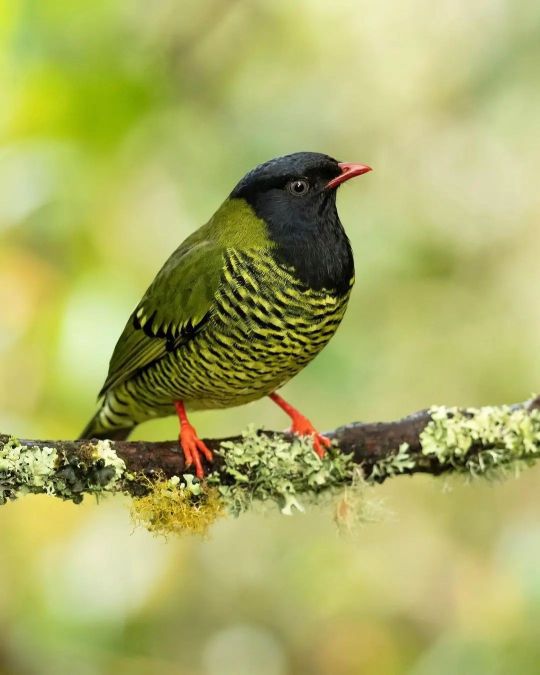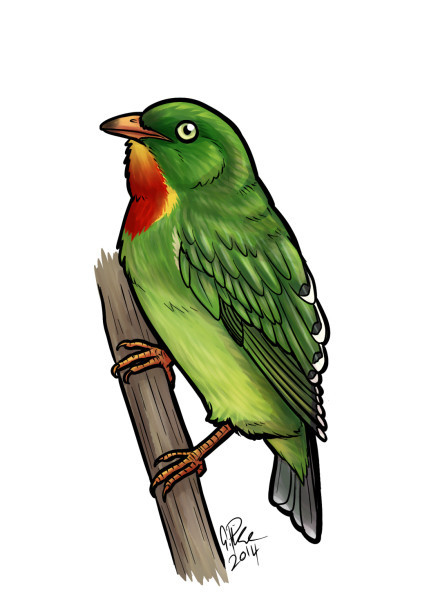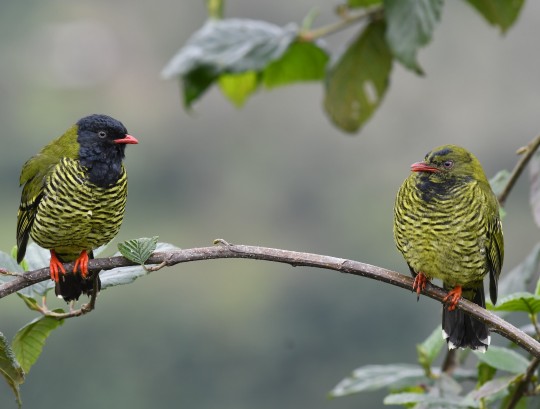#pipreola
Text

Green-and-black Fruiteater (Pipreola riefferii) male, family Cotingidae, order Passeriformes, found in mountain forests of western South America
photograph by John L Crawley
649 notes
·
View notes
Text

[1051/10,977] Black-chested Fruiteater - Pipreola lubomirskii
Order: Passeriformes
Suborder: Tyranni
Family: Cotingidae (cotingas)
Photo credit: Andrew Spencer via Macaulay Library
72 notes
·
View notes
Video
Green-and-black Fruiteater by Jay Packer
Via Flickr:
Reserva Ecológica Río Blanco, Colombia
#Animalia#Amniota#Aves#Cotingidae (Cotingas)#Vertebrata#Archosauromorpha#Chordata#Reptilia#Tetrapoda#Diapsida#Colombia#Green-and-black Fruiteater#Passeriformes#South America#Animals#Birds#Pipreola riefferii#flickr
7 notes
·
View notes
Photo

Green-and-black Fruiteater (Pipreola riefferii)
© Charles Davies
15 notes
·
View notes
Photo


Orange-breasted Fruiteater (Pipreola jucunda), James Muchmore
1K notes
·
View notes
Text

Orange-breasted Fruiteater (Pipreola jucunda), James Muchmore
11 notes
·
View notes
Photo

Pipreola arcuata by Neil Orlando Diaz Martinez
#bird#birds#animal#animals#biology#nature#wildlife#fauna#Passeriformes#Cotingidae#Pipreola#Pipreola arcuata
20 notes
·
View notes
Photo

Barred Fruiteater
140 notes
·
View notes
Photo

A new variant has been added!
Fiery-throated Fruiteater (Pipreola chlorolepidota)
© G. Pike
It hatches from black, eastern, female, green, male, orange, red, scarce, scarlet, similar, small, upper, yellow, and yellowish eggs.
squawkoverflow - the ultimate bird collecting game
🥚 hatch ❤️ collect 🤝 connect
75 notes
·
View notes
Photo

October 12, 2020 - Fiery-throated Fruiteater (Pipreola chlorolepidota)
These small fruiteaters are found in forests along the Andes mountains in southern Colombia, Ecuador, and northern Peru. Their diet is not known, but they have been observed foraging in fruit trees and probably feed almost entirely on fruit like other members of this genus. Females build small, shallow nests on tree branches from moss, liverworts, and roots. While they incubate the eggs alone, both parents care for the chicks. They are listed as Near Threatened by the IUCN due to a loss of habitat from mining, oil exploration, logging, and agriculture.
#fiery-throated fruiteater#fruiteater#pipreola chlorolepidota#bird#birds#illustration#art#tropical#birblr art
63 notes
·
View notes
Photo

Orange-breasted fruiteater (Pipreola jucunda)
The orange-breasted fruiteater is a species of bird in the family Cotingidae native to Colombia and Ecuador. Its natural habitat is subtropical or tropical moist montane forests. It is a plump green bird about 18 centimetres long. Males have a glossy black head and bib, an orange throat and yellow belly. Females lack the dark head and have green upper parts and green and yellow streaked underparts. The orange-breasted fruiteater is sometimes seen in small flocks with other species. It feeds largely on fruit which it either eats while perching on a branch or while hovering rather clumsily. Cup-shaped nests have been found about 5 metres above the ground but little is known of this bird's breeding habits.
photo credits:Francesco Veronesi
#Orange-breasted fruiteater#Pipreola jucunda#bird#zoology#biology#biodiversity#science#wildlife#nature#animals#cool critters
447 notes
·
View notes
Text


Orange-breasted Fruit-eater (Pipreola jucunda), family Cotingidae, order Passeriformes, Ecuador
photograph by Lior Berman (@photolior)
511 notes
·
View notes
Text

[640/10,977] Barred Fruiteater - Pipreola arcuata
Order: Passeriformes
Suborder: Tyranni
Family: Cotingidae (cotingas)
Photo credit: Dario Hipo via Macaulay Library
#birds#Barred Fruiteater#Passeriformes#Tyranni#Cotingidae#Pipreola#birds a to z#undescribed#0% - 25%
66 notes
·
View notes
Photo

Orange-breasted Fruiteater (Pipreola jucunda) Cundinamarca, Colombia
photograph by Dave Curtis | Flickr CC
28 notes
·
View notes
Photo

Photo of the Day – The Orange-breasted Fruiteater (Pipreola jucunda) is found on the western slope of the Andes Mountains in southern Colombia and northern Ecuador. They are often found in fruiting trees, where it is possible to see more than just one feeding.
This great photo was taken by Dušan Brinkhuizen in Ecuador
#RockjumperBirding#birds#birding#birdwatching#nature#wildlife#photography#birdphotography#naturephotography#wildlifephotography#fruiteater
119 notes
·
View notes